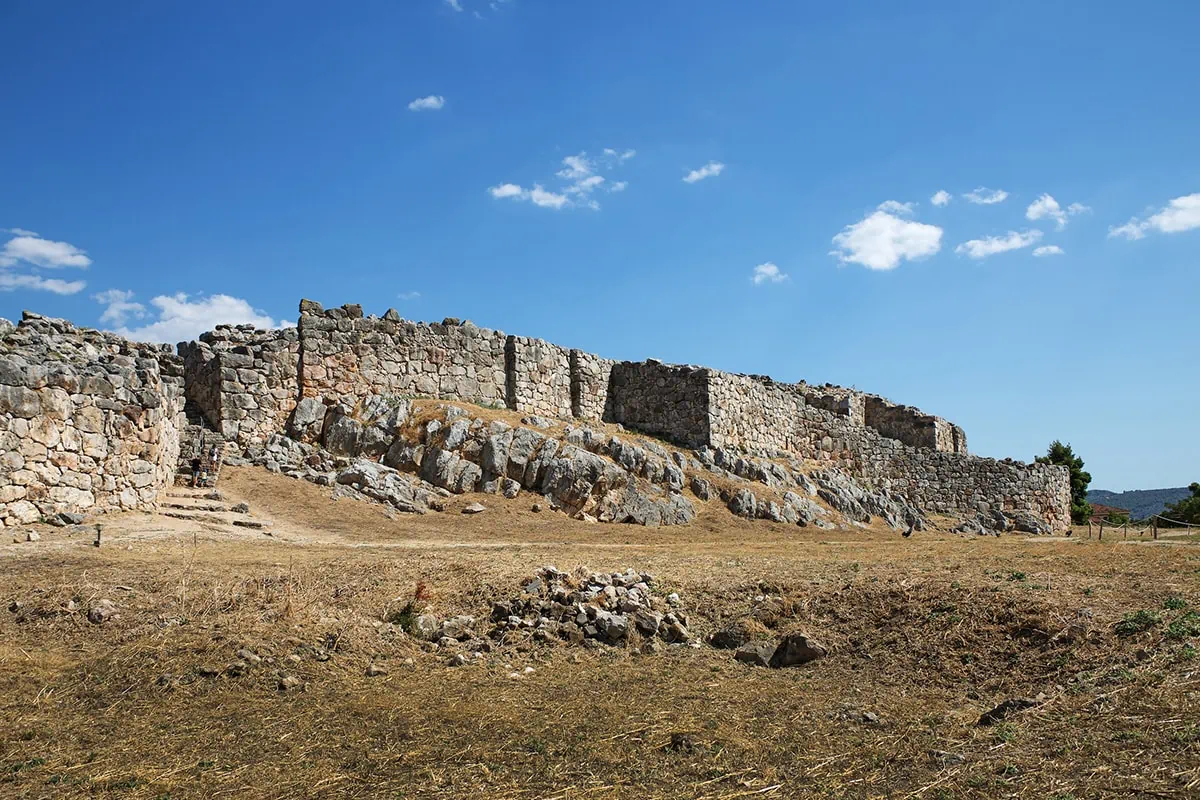The cultural heritage of the prefecture is amazing.
110 archaeological sites & monuments of exceptional interest have been officially recognized.
In the prefecture there are:
- Three world-famous theaters: Epidaurus, Small Theater of Ancient Epidaurus, Ancient Theater of Argos,
- Two archaeological museums: Nafplion and Argos,
- High radiation archaeological sites: in Mycenae and Tiryns but also smaller ones (e.g. Ancient Heraion - Dendra - Castle of Midea - Pyramid of Ellinikos - Ancient Bridge of Arkadikos - Prosymni etc.),
- Byzantine monuments: Agia Triada - Neo Heraio - Anifi - Agia Moni - Lygourio - Adami - Moni Avgou etc and many more.
It is also worth walking through the picturesque alleys of the old town of Nafplio. There you can visit the Komboliou museum, the church of Ag. Spyridon where Kapodistrias was murdered, the Peloponnesian Folklore Foundation "Vasilios Papantoniou", the first Greek Parliament, Syntagma Square where the archaeological museum is also located.
Ancient Epidaurus (33 km)
When someone approaches the region of Epidaurus from Nafplio via Lygouri, he cannot help but admire the charismatic natural beauty that attracted gods and men to this place. Ancient Epidaurus is built on the ridges of Mount Acra with pine trees descending from the slopes to the waters of the homonymous bay of Epidaurus. On the site the ancient civilization of Epidaurus developed, not far from the sanctuary of Asklepios and the known in everyone, Ancient Theater.
Here, there was the sanctuary of Asclepius, the temple dedicated to Dionysus, the grove dedicated to the goddess Artemis and the sanctuary of Aphrodite. In the area of the peninsula that protectively hugs the waters of the harbor were discovered the sanctuary of Hera, chambered Mycenaean tombs, the cemetery with tombstones and a multitude of statues and inscriptions.


Archaeological site of Mycenae (42 km)
In the midst of a dreamlike but at the same time harsh landscape, the mythical acropolis of Mycenae emerges like an antediluvian rock. The wild spectacle it offers to the traveller, the conical heights, with the deep and steep gorges surrounding it, separating it from the huge rocks which nature has sown all around the region, looks like the most ideal setting for the dark blood-stained drama of the terrible family of Atreides.
The unique Gate of Lions and Burial Circle A, the Mycenaean palace with its contiguous apartments and the multitude of houses with rich finds, Burial Circle B with a total of 24 tombs, of which 14 are royal, the famous treasure of Atrea or Tomb of Agamemnon, as well as a multitude of other buildings, embrace the visitor and take him back thousands of years, to the time when "the gods walked the earth", making the 'pilgrimage' to Mycenae, a unique life experience.
Archaeological site of Tiryns (26 km)
On the road that connects Argos with Nafplio, built on a rocky hill, is the ancient acropolis of Tiryns, one of the most important Mycenaean cities, which associated its name with the mythical circle of Hercules.
The city was founded by the eponymous hero Tiryntha, son of Argos and grandson of Zeus, who, according to mythology, built the impregnable walls with the help of the Cyclops.
Today, the visitor will admire the mythical cyclopean walls, the unique tunnels, as well as the magnificently decorated palace with the hall, the forecourt and the main palace.


Iria (3 km)
Iria is a small picturesque village in the Municipality of Asini in the prefecture of Argolis. It is divided into the upper village and the beach. Its most famous point is its small port, particularly picturesque with many fishing boats.
On the Iria avenue, on the left side, there is the Signal Tower (Fryktoria) of the 7th century B.C. which is kept in very good condition until today. It was used to communicate with other similar towers so that they could warn with smoke signals during the day and fire signals at night to Ancient Asini and Mycenae about any enemy raids.
Its plain is known for the large production of artichokes, which are the heart of the residents' economy. Every year the Artichoke Festival is organized with traditional dances and folk orchestra, as well as artichoke-based food.
Palamidi (25 km)
Palamidi is a fortress in Nafplio, Greece, built in 1687 by the Venetians. The hill on which it is located is 216 meters high and the ascent to Palamidi is either via a carriage road or via a staircase with many steps, known as 999 steps, when in reality there are 857 steps.
It goes without saying that the view from the castle to the city of Nafplio, Akronafplia, the Argolic Gulf and the surrounding mountains is amazing.


Bourtzi (23 km)
It was originally called the island of Agios Theodoros by sailors.
The Venetians were the ones who fortified it with a tower. It then changed hands several times between the Venetians and the Turks. After the Greek revolution of 1821 and after the arrival of King George I, Bourtzi was disarmed, ceased to be a fortress and became the residence of the guillotine executioner. From the 1930s to the 1970s, Bourtzi was converted into a hotel.

